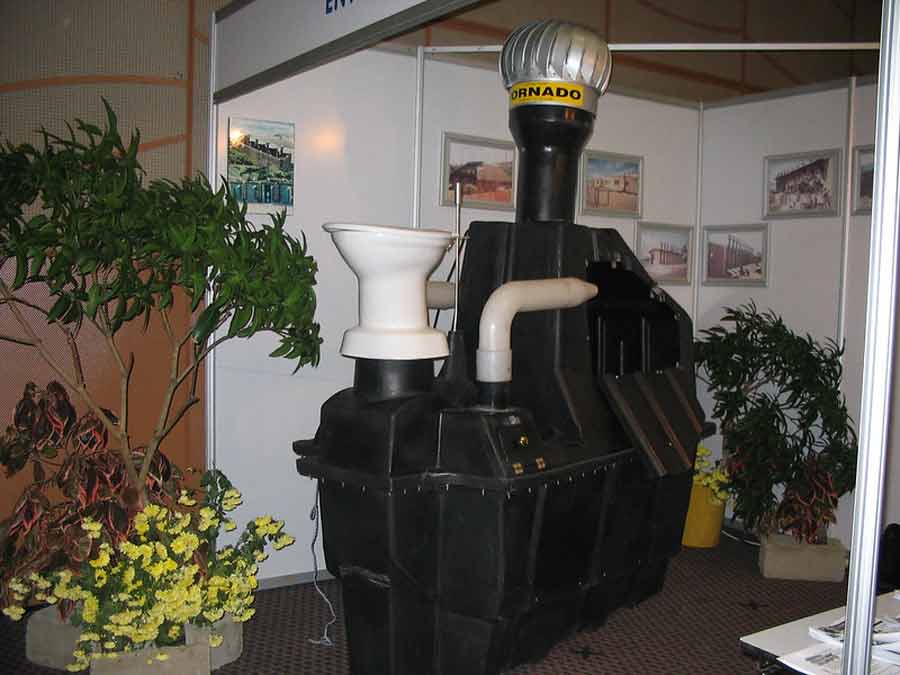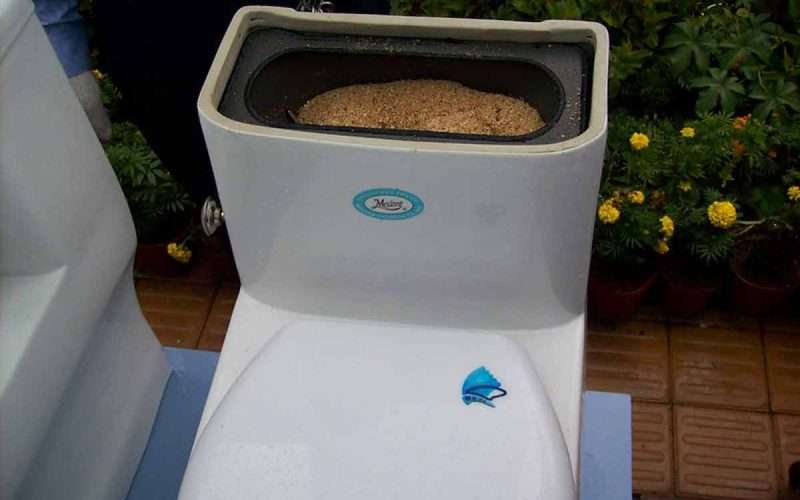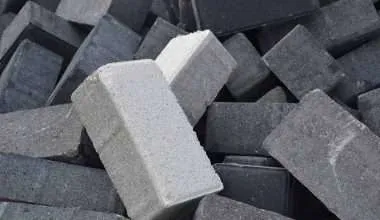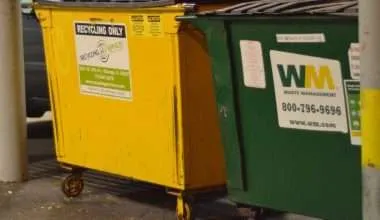Table of Contents Show
The world is evolving at a fast pace and we are trying our best to keep up with the new trends. It feels amazing to see more and more people going green and switching towards eco-friendly products. Composting toilet is one such product. It can help people promote green living.
We live in a modern world where looking for green options may be simple but the challenge is to practice it. Opting for a composting toilet may be a small step towards greener earth and it just might turn out to be something good.
The first great fact is that using commercial composting toilets instead of flush toilets will help save a lot of water.
According to an estimate, every individual flushes a toilet around 2,000 times a year. According to the US Environmental Protection Agency (EPA), each flush uses up at least 1.28 gallons of water. A waste of about 2560 gallons per year for each person!
Hence, turning to a composting toilet will save a lot of water from going to waste.
What is a Composting Toilet?
In simple words, a composting toilet is a dry toilet. It is more like a designed device that does the job of turning solid waste into compost.
It works by creating an environment that has a good amount of oxygen present.
This enables the aerobic bacteria to break down waste. This process takes place and works well under certain conditions as it is a natural process.
Moreover, it is a waterless system, so it tends to waive off the water cost which would not be possible in a regular traditional toilet.
A compost toilet retains human waste in it and then processes it in order to take out the nutrients present in it. These nutrients include nitrogen and phosphorus which are then reused locally.
Design of a Composting Toilet
Composting toilets come in two designs. The first one is a self-contained design that comprises a complete composting system that begins from beneath the bowl. These types of compost toilets are good for small homes, boats, or cabins. Usually, they are mostly for temporary use.
The second design of a composting toilet is the central or remote toilet. The solid and liquid waste from the toilet goes to a remote composter situated anywhere around the place. An illustration of both types is depicted by San Francisco Public Utilities Commission here.
Usually, it is more like a compost pile or a septic tank. If you install a large system, you may be able to connect it to many toilets. This makes it suitable for big homes and any bigger properties.
How does a Composting Toilet work?
No matter which design you install and use, both need a regulated environment for the aerobic bacteria to completely break down into waste. So it is vital to have the right amount of moisture, carbon-nitrogen balance, and temperature.
But what if these requirements are not met? The waste will not turn into compost. It will instead, become something very unpleasant to you and also offend your senses.
A lot of extra moisture present in the composting toilet can kill oxygen-breathing bacteria by drowning it. So, the trick is to keep a check and balance on the moisture of the toilet. It should be moderately moist and not wet.
Many of the composting toilets have a urine container that is detachable and one has to empty it when it gets filled. An alternative to this is a drain pit which usually comes with a self-contained design.
Without doubt, proper disposal of urine will assist in eliminating any excess nitrogen that may have built up in the compost pile. Also, adding carbon-rich materials like peat and coconut fiber to the pile will make sure of the ideal balance between nitrogen and carbon.
Moreover, aerobic bacteria need a temperature between 60 and 100 degrees Fahrenheit to survive. Many manufacturers regulate temperature, humidity, and chemical balance for the best outcome. This, they do by using thermostats, sensors, or other devices.
Pros of a Composting Toilet
1. Cost Effective
With being an environment-friendly option, a composting toilet is also a cost-effective option. Going green while cost-cutting is something anyone would be interested in! Many models of composting toilets are cheaper and easily affordable than installing a septic tank system.
Apart from that, these composting toilets last a very long time, just like a conventional system. This gives composting toilets a higher return on the investment made..
Some people might argue that a single composting toilet can cover the cost of many traditional toilets. But, the point of focus is your investment reaping returns over time when you notice the savings on the water bill! In other words, they save costs by conserving water.
2. Suitable for Rural Off-grid Living
Introducing these toilets in rural or underserved areas can make sanitation more accessible. They are also suitable for areas with limited water supplies.
3. Easily Maintained
What makes the composting toilets easy to maintain is that they are usually smaller than the old conventional toilets. They may be smaller but are equally durable and sturdy with a long life.
Some of the parts in a composting toilet do need maintenance and might have a chance of breaking down in the future. This is mainly due to it being a waterless way of waste disposal.
4. Saves Space
As already mentioned composting toilets are compact, hence, they can fit into smaller spaces. They are easy to install in a cabin, RV, and other small places. It saves up a lot of space as it is a portable toilet, unlike a regular conventional toilet.
Being small does not make a composting toilet uncomfortable. Instead, they are as comfortable as a regular conventional toilet.
Furthermore, if you are someone who lives in an area without a sewage system or a failed sewage system then a composting toilet will be good for you. It definitely will be a great solution for you.
5. Uses Less Energy
Composting toilets do not use water, unlike conventional flush toilets. Flush toilets need energy-intensive water treatment and distribution systems. But compost toilets save on the energy used for pumping, treating, and heating water. The reduced energy use means less production of energy and thus fewer greenhouse gases put into the atmosphere.
6. Lower Wastewater Treatment Emissions
Traditional flush toilets promote greenhouse gas emissions.
Utility companies have to treat the wastewater of the flush system filling up the sewage system. The process needs energy. But Composting toilets produce less wastewater. The low flow of wastewater lessens the energy required for treatment, resulting in fewer emissions.
7. Reduced Transportation Emissions
Composting toilets set up in remote or off-grid locations do not need large public sewage system. This means savings in energy used to construct and maintain sewage systems as well as getting sewage to a treatment plant. Hence low air pollution.
8. Carbon Sequestration
Composting toilets convert human waste into compost which is a useful soil addition in gardens and landscaping. The application of compost to soil can help trap carbon, thus reducing greenhouse gas emissions in the atmosphere.
9. Conservation of Resources
Composting toilets reduce the need for virgin resources such as wood (for toilet paper). There is also no need for synthetic chemicals (used in wastewater treatment). The use of fewer resources means a smaller carbon footprint linked with resource extraction, production, and transportation.
10. Energy-Efficient Ventilation and no Odors
Low-energy ventilation systems installed in many composting toilets help manage odors. They also help maintain the aerobic conditions necessary for efficient composting. These systems consume minimal energy compared to large-scale sewage treatment plants. However, you have to be proactive in having to see that the aeration is always working.
11. Lower Chemical Use
Regular flush toilets often require the use of chemicals to treat wastewater and maintain the sewage system. People often use chemicals to open up clogged flush toilets. In contrast to that, composting toilets cut the need for these chemicals. Thus, this reduces the associated emissions from their production and disposal.
12. Reduced Fertilizer Emissions
Composting toilets convert human waste into nutrient-rich compost. Thus they reduce the need for synthetic fertilizers. The fertilizer factories need a lot of energy to produce chemical fertilizers. Fertilizer factories release huge amounts of greenhouse gases.
13. Lower Infrastructure Costs and Emissions
In Rural areas, composting toilets are useful switch in place of costly sewage systems making public health within reach. Apart from the cost, the process of installation is energy-intensive. The extra energy used results in the release of greenhouse gases. Composting toilets reduce the demand for such infrastructure. This lowers the related emissions.
14. Reduces harmful germs
The composting process breaks down the harmful microbes and thus reduces the risk of disease spread. However, for that to happen, you must install, operate, and maintain the toilet correctly. Also, you must also process the compost waste properly.
For that matter, this is a ‘sine qua non’ for all the benefits that we expect from composting toilets.
Cons of a Composting Toilet
1. It will always remain an Alternate
A composting toilet is surely an eco-friendly toilet and it has a lot of benefits too. But, people will always consider it as an alternative and it will not be their prime choice. This is because we live in a fast world where many people might not find this practical.
According to research, composting toilets are unsuitable for urban areas. They tend to pose a challenge to environmental codes which do not allow the installation of composting toilets.
Another issue with composting toilets which does not make them a suitable fit is ventilation. In apartment buildings where there is little ventilation, composting toilets may not be a good option to go for.
2. Electricity may be required
Because everything is being modernized, these composting toilets now also come with advanced features such as electronic monitoring and connectivity. Therefore, they will need electricity to operate.
Buying a battery may be necessary for you to place inside the composting toilet depending on your situation. You have the option of opting for a non-electric way but then the composting process will take a long time to finish.
3. Odor
Composting toilets will emit odor. You do learn this when you get familiar with the concept of a composting toilet. Many manufacturers state that their brand does not emit odor but someday, you will smell that odor for sure.
This might be due to the reason that you forgot to empty the detachable bin, or you may have not emptied the composting toilet properly. Malfunctioning ventilator may also cause the odor to spread. These things lead to an unpleasant odor in your composting toilets.
Although this is a disadvantage, but you can fix it if you keep the above-mentioned things in check and work on maintaining the moisture level of the toilet. Regular and proper cleaning will gradually result in an odorless toilet.
4. Higher Initial Cost
The upfront cost of purchasing and installing a composting toilet can be higher than that of traditional flush toilets. High-quality models with advanced features may be even more expensive.
5. Steep Learning curve
You need to have basic knowledge of how composting works to ensure the proper functioning of this type of toilet.
This means monitoring moisture levels and turning or agitating the compost. And emptying the composting chamber is a regular chore. Moreover, you need to know how maintaining the right moisture levels and ensuring proper aeration can help the process.
6. Inadequate Composting
What happens if the composting process is not managed correctly? It may not fully decompose waste. This may lead to incomplete breakdown waste and the presence of pathogens.
Frequently Asked Questions
1. Are composting toilets worth it?
Though the initial cost of a composting toilet may be higher than a conventional toilet, its merits outweigh its drawbacks. Plus, the benefits are long-term. Composting toilets save you a significant amount of money over time and the best part is that they are eco-friendly.
2. How often do you have to empty a composting toilet?
A proper maintenance tip is to empty the toilet every two weeks when used by two persons every day. If more people use it, then the period will have to get shorter.
3. How long does it take for a composting toilet to compost?
The simple answer is that it depends on the weather. In a mild climate, it takes about a year for a composting toilet to turn human waste into compost. In a colder climate it takes up to 2 years to do it. However, in off grid areas heating as well as electricity can be got from solar energy. And solar panels are durable enough to work for a very long period. Additional alternative energy sources are wind energy and biogas.
4. Are there examples of successful use of composting toilets in the world?
Some of the noteworthy examples are:
a. Sweden’s Eco-Village Hammarby Sjöstad
The toilets separate urine and feces to optimize the composting process and reduce water use. This eco-village is a prime example of how composting toilets can be part of a holistic approach to sustainable urban development.
b. South Africa’s Enviro Loo

Enviro Loo is a South African company that has developed waterless, off-grid toilet systems. The system dehydrates waste and transforms it into a dry, odorless material over time.
c. Haiti’s SOIL (Sustainable Organic Integrated Livelihoods)
SOIL is a nonprofit organization operating in Haiti. SOIL collects and composts the waste, turning it into valuable compost that can be used in agriculture.
d. Australia’s Composting Toilet Systems
Composting toilets are sometimes used in Australia, especially in remote or off-grid locations. The usual locations are national parks, campgrounds, and eco-friendly homes.
e. Eco-Tourism and Remote Lodges
Eco-tourism facilities and remote lodges around the world sometimes use composting toilets. This also matches with their aim to reduce carbon footprint.
f. Eco-Villages and Sustainable Building Projects Worldwide
Composting toilets are often built in eco-villages. The global ecovillage network supports Urine Diverting Dry Toilet (UDDT) as a solution for water scarcity. Usually projects that aim for sustainable ways and resource conservation prefer to go for composting toilets. Examples can be found in countries like Denmark, Canada, and New Zealand.
g. Emergency and Disaster Relief
These are sometimes used in disaster-stricken areas where there is an absence of water supplies and sewage systems. Oxfam uses composting toilets to provide sanitation solutions in emergencies. It has adopted ecological sanitation (Ecosan) as a policy and composting toilets are part of that outlook.
So, composting toilets are versatile and adaptable to suit various situations.






